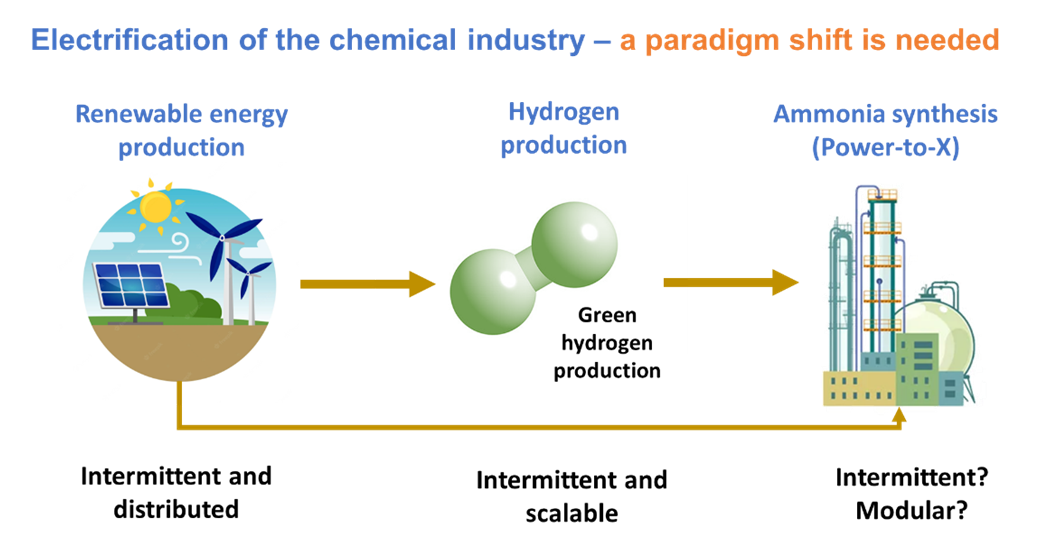2024 AIChE Annual Meeting
(491d) New Processes, Integration and Optimisation Approaches for Location-Tailored Ammonia Synthesis
Authors
Ammonia is the second largest globally produced chemical (~ 240 million tons/year), mainly used as fertiliser, feeding over 50% of the World’s population. Currently, (brown/grey) ammonia is produced through the Haber Bosch process using fossil fuels as a source of energy and feedstock, responsible of ~ 1.8% global CO2 emissions (~ 40% of the primary chemical industry). The replacement of brown/grey ammonia by green ammonia, made exclusively using renewable energy, hydrogen from water and nitrogen from air, can fully decarbonise this industry, leading to green fertilisers but also as a carbon-free energy carrier, with high energy density, easy to store and with an existing infrastructure, uniquely positioned to become the fuel of the future in a decarbonised society [2].
The de-fossilisation of the conventional Haber-Bosch process to produce green ammonia using renewable energy to produce green hydrogen via water splitting completely breaks the integration developed over 100 years. In green Power-to-ammonia plants, feeds to the processes are inherently intermittent (production of renewable energy) while others require steady-state operation (ammonia synthesis reactor); parts of the process can flexibly vary its capacity (electrolysers for hydrogen production) while others require almost constant capacity (ammonia synthesis) [3] - see Figure. Achieving process alignment currently focuses on the use of buffers (hydrogen tanks and batteries) to align energy generation with ammonia production. However, buffers can only economically overcome short-term energy variations, and even so, they rapidly increase the overall capital costs of the plant [4].
A completely different approach is the development of flexible processes, where production follows the availability of renewable energy, an anathema to traditionally steady-state chemical processes. A novel route to making ammonia through integrating reaction and separation into a single vessel using absorptive separation, thereby removing the need for a recycle loop, is then presented [5]. In addition, a new heat integration approach is presented, able to transfer heat between different steps in the processes operating at different timescales. Overall, the process has the benefits of being modular for small-scale distributed applications and fast ramping to follow fluctuations in energy supply. The novel single-vessel process is compared to the conventional Haber-Bosch process in terms of relative economics and application to different energy system and production capacities [6].
These new technologies will have a broader impact beyond green ammonia as they are paving the way for a new way of designing, operating and optimizing electrified chemical processes, essential to fulfil our decarbonisation ambitions.
References:
[1] L. Torrente-Murciano, J. B. Dunn, P. D. Christofides, J. D. Keasling, S. C. Glotzer, S. Y. Lee, K. M Van Geem, J. Tom, G. He, Nature Chemical Engineering 1 (1), (2024) 18-27
[2] C. Smith, A. K. Hill and L. Torrente-Murciano, Energy & Environmental Science, 13, (2020) 331-344
[3] L Torrente-Murciano, C Smith, Nature Synthesis 2 (7), (2023) 587-588
[4] J. Armijo and C. Philibert, International Journal of Hydrogen Energy, 45, (2020) 1541-1558
[5] C. Smith and L. Torrente-Murciano, Advanced Energy Materials, 11, (2021), 2003845
[6] C Smith, L Torrente-Murciano, Joule 8 (1), (2024) 157-174
